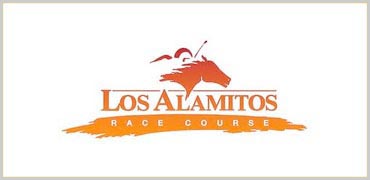By Bloodhorse.com
CYPRESS, Calif. (July 11, 2014) — Southern California’s Los Alamitos Race Course, now running its first Thoroughbred meet in 23 years, has earned accreditation from the National Thoroughbred Racing Association Safety and Integrity Alliance, it was announced July 11.
The current eight-day meet that ends July 13 is one of three stands for Thoroughbred racing at the Orange County track this year, along with the Los Angeles County Fair Sept. 4-23 and a winter meet Dec. 4-21. By assuming some of the racing dates abandoned by Hollywood Park and Fairplex, the Los Alamitos Racing Association has helped to maintain a year-round circuit for Thoroughbreds in Southern California.
In anticipation of its re-entry to the Thoroughbred game, Los Alamitos invested about $5 million in improvements, including an expansion of the main track to one mile. High-definition monitors line the facility and 200 additional stalls are forthcoming.
“Los Alamitos has made safety a priority for all horses competing here—Thoroughbred and Quarter Horse,” said Brad McKinzie, vice president and general manager of the Los Alamitos Racing Association. “We are appreciative of this designation that underscores that commitment.”
The accreditation followed a complete review of all racing operations at the facility. All accreditations carry an effective period of two years.
Founded by Frank Vessels in 1951, Los Alamitos has long been recognized as the world’s premier Quarter Horse track. Prior to this month, the venue last played host to Thoroughbred racing with the Orange County fair meet in 1991.
In the area of injury reporting and prevention, best practices identified by NTRA’s inspection team included pre-race exam protocols; the post-mortem veterinary examination program of the California Horse Racing Board; establishment of an injury review program; and maintenance of a veterinarians’ list, which is shared among multiple racing jurisdictions. The list protocol set in place by the CHRB is exceptional in that all horses that are required to work for the regulatory veterinarians are subjected to testing and penalties for any overages that are identical to post-race testing penalties.
In areas intended to create a safer racing environment, best practices cited at Los Alamitos included regulation of toe grabs, regulation and enforcement for riding crops and helmets, presence of state of the art equine ambulances during racing, a substance abuse and addiction treatment program, data collection and storage to enhance racing surface maintenance, and required safety training for all track employees that come in contact with horses.
In the area of equine drug testing and penalties, best practices identified included alkalinizing agent regulation and TCO2 testing procedures; exogenous anabolic steroids regulation and testing protocols; and Racing Medication Testing Consortium accreditation of the track’s official testing laboratory, the University of California-Davis’ Kenneth L. Maddy Equine Analytical Chemistry Laboratory.
Regarding the health and safety of jockeys, best practices recognized included appropriate standards for licensing jockeys and the presence of a board certified medical doctor during racing.
For aftercare and transition of retired racehorses, Los Alamitos exceeded best-practice criteria through its involvement with the California Retirement Management Account (CARMA), an independent nonprofit which receives .3% of winning owner purse earnings and disburses it to farms and organizations caring for retired Thoroughbred racehorses.
Los Alamitos also was commended for protocols relating to security across several areas, including: stop wagering protocols, public communication procedures, and investigation protocols.
Los Alamitos is now one of 24 racing facilities currently fully accredited by the Alliance.
Formed in October 2008 with the goal of establishing national uniform standards in the areas of safety and integrity, the Alliance includes 55 racetracks in North America and every major national horsemen’s organization.


